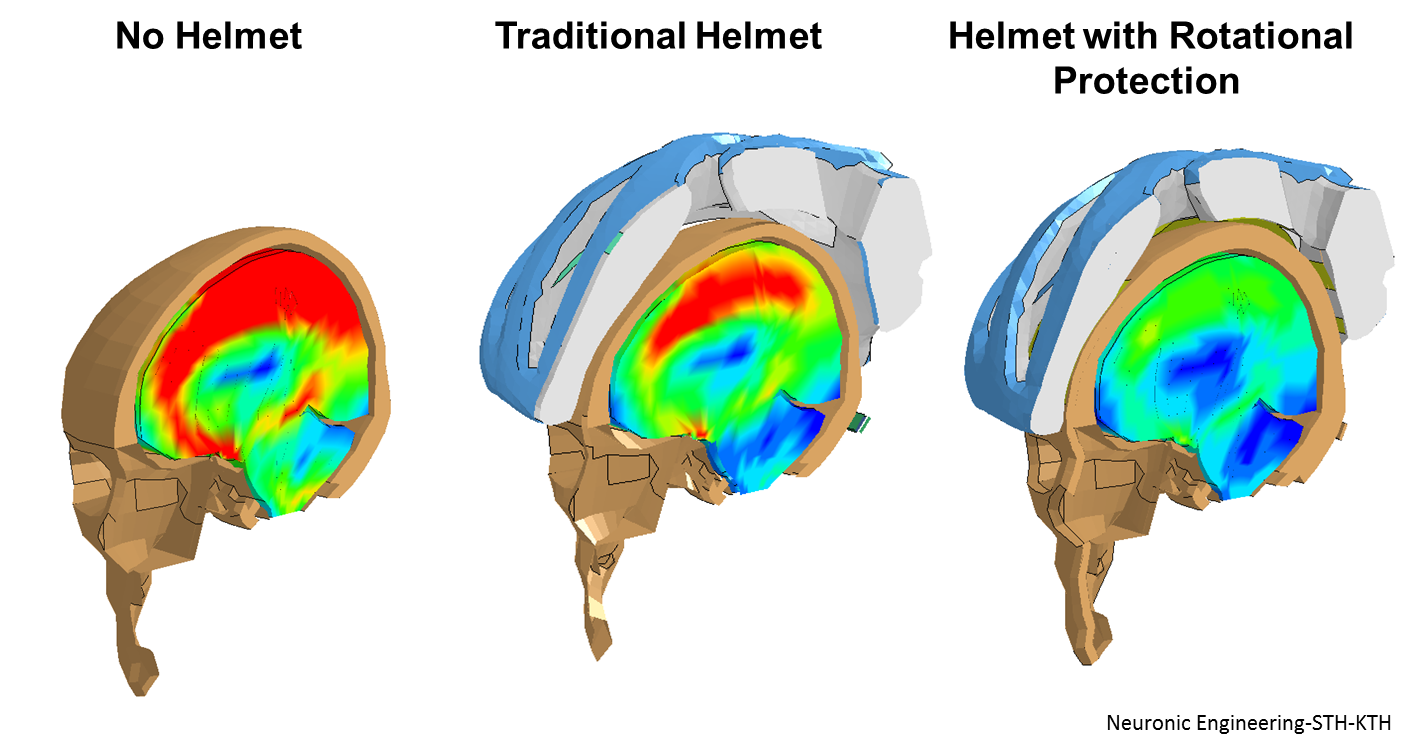How Does a Bicycle Helmet Protect?
One of the most common severe injuries in bicycle accidents are head injuries. Helmets are a common protection for cyclists today. The question is how do the helmet protect the head and could today’s helmets be improved?
Within this project, real accidents have been studied. These real accidents have then been reconstructed with the computer models developed at our unit. These accident reconstructions have then been used to compare the difference between wearing and not wearing a helmet.
Simulations with different helmet have also been performed, which shows the need of new helmet test standard.

The project has partly been financed by Länsförsäkringarnas Cooperation Research fund.
Publications
Fahlstedt, M, Depreitere, B., Halldin, P., Vander Sloten, J., Kleiven, S., Correlation between Injury Pattern and Finite Element Analysis in Biomechanical Reconstructions of Traumatic Brain Injuries, Journal of Biomechanics, Vol. 48, nr 7
Fahlstedt, M, Halldin, P, Kleiven, S, The Protective Effect of a Helmet in Three Bicycle Accidents - A Finite Element Study, Accident Analysis and Prevention, Vol 91
Fahlstedt, M, Halldin, P, Kleiven, P, Importance of the Bicycle Helmet Design and Material for the Outcome in Bicycle Accidents, (2014) Proceedings, International Cycling Safety Conference 2014, 18-19 November 2014, Göteborg, Sweden, pp 1-14
Halldin, P., Deck, C., Willinger, R., Proposal for an new test method of bicycle helmets, Proceedings, International Cycling Safety Conference 2015, 15-16 September, 2015, Hannover, Germany
Collaboration
KU Leuven University, Belgium
